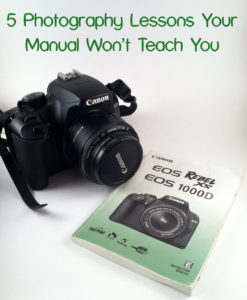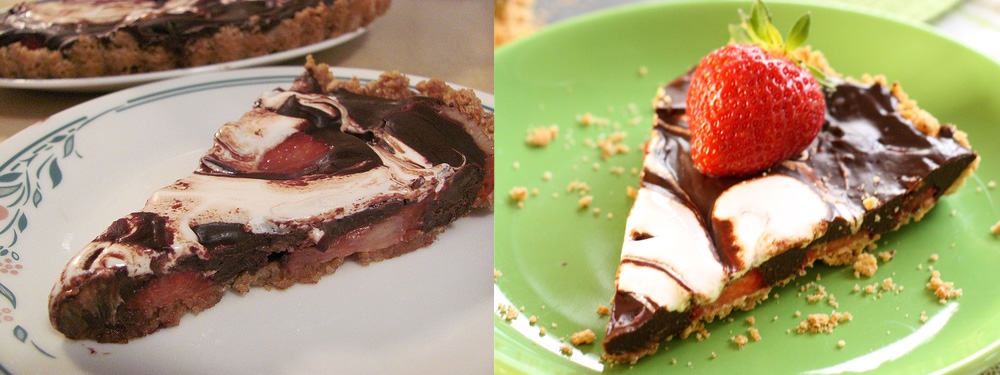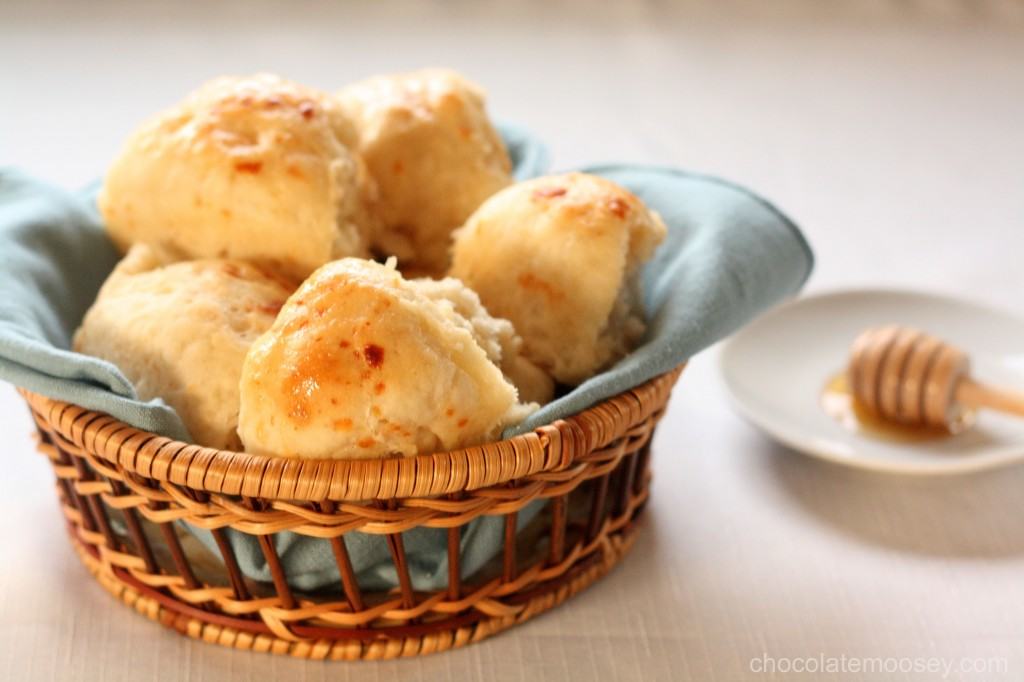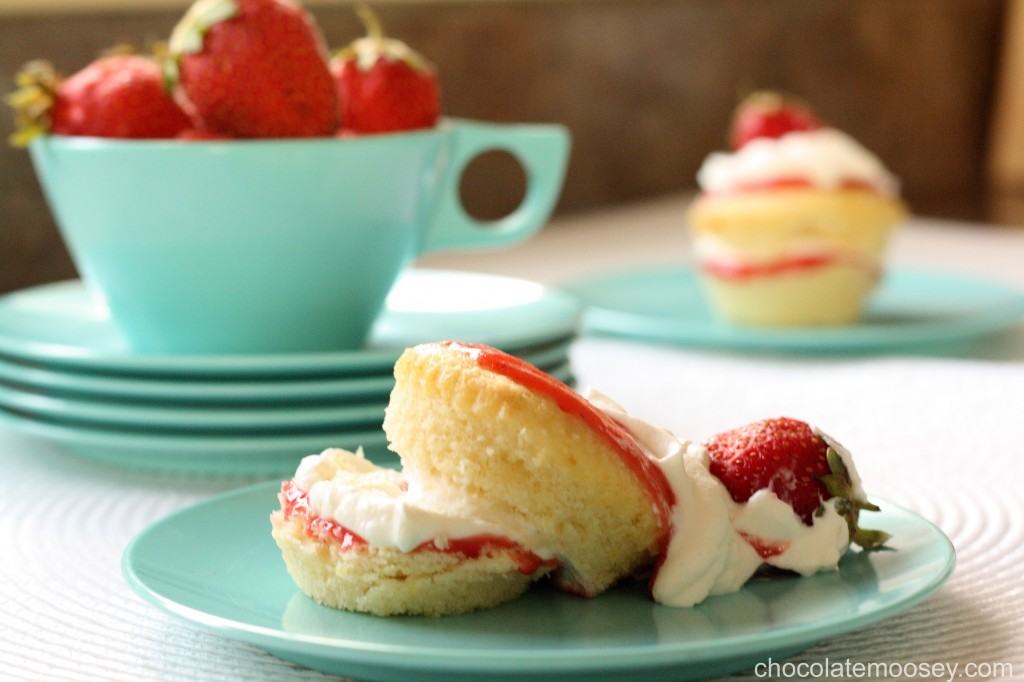5 Photography Lessons Your Manual Won’t Teach You

Lately, I’ve been getting asked about photography tips. Everyone is always looking for improvement, and I’m more than happy to help with anything I can. I am not a expert photographer by any means, but I do have my degree in Multimedia. Currently, I am a videographer, so I know about lighting, composition, white balance, etc. Ironically, I never learned photography. A lot of the concepts overlap, but taking still shots vs. movement is different. Right now, photography is a hobby for me; I focus mainly on food and landscapes.
Today, I have 5 Photography Lessons Your Manual Won’t Teach You, tips to keep in mind before you even think about shooting (a part of pre-production, if you will). They deal more with the thought process rather than technique. I hope it gives you a different perspective next time you shoot.

Image from So Many Things To Do, So Little Time on Tumblr
1. There will be people better than you. There will be people worse than you. Accept this and move on. You’re going to drive yourself crazy. We all do it, including me. You think you are taking great photos, then you start visiting other blogs and realize they are doing laps around you. Or you are constantly rejected by those popular food sites but have no clue why. Don’t give up! The most important rule is not to compare yourself to others. Focus on being better than you were yesterday. In other words, look at your overall improvement rather than comparing yourself. Trust me – I get so overworked on my photos not turning out how I’d like, but if I look back a year ago, I have accomplished so much.
2. Focus on one area of improvement at a time. I look at my pictures and see several areas of improvement. Instead of overwhelming myself, I focus on one area. Once I got that part down pretty well, I move onto improving something else. Lighting was a huge issue for me (and sometimes still is). First step was making a light box (more on that in another post). Now I’m starting to use natural light as much as I can. Of course, working full-time during the day makes it tough, especially during the winter. Once I improved my lighting, I focused on composition. What props can I use? What should I do for my background? Again, more on that later, but baby steps. Remember, Rome wasn’t built in a day!

Chocolate Chip Cut-Out Cookies: left 2009, right 2012

Angel Food Cupcakes: left 2009, right 2012

Strawberry Smores Tart: left June 5, 2011, right June 7, 2012 (almost exactly one year)
3. Learn your camera. It doesn’t matter if you have a DSLR, a point and shoot, or an iPhone. A good photographer is one who understands what is going on and how the camera works. Sure, having a DSLR will produce sharper and higher-quality images, but that is no excuse for poor lighting or lackluster composition. Here’s a secret – read more than your manual. The manual is there to explain how to switch to Aperture Mode (Av mode), but it does not explain why you would or what the numbers mean. If it does, most of us just glaze over and get even more confused. The concepts didn’t click with me until I read a few tutorials. I recommend part 1 and part 2 from Kevin and Amanda. You can find more tutorials on my Pinterest board.
I started out with a very basic Kodak point and shoot. Then I upgraded to a little more advanced point and shoot, the Canon Powershot. This camera has the shutter speed (Tv mode), aperture (Av mode), and manual (M mode) modes. These are the same modes that a fancy DSLR has, but the difference was I had one lens and one lens only. Then one day, my friend was selling his Canon Rebel, so I bought it. Currently, I shoot with the 50 mm f 1.8 lens and the 28-135 mm lens. I highly recommend the 50 mm (f1.4 if you can afford it, but f1.8 is a good starter). However, you can’t get too close, so I use the 28-135 mm as my zoom lens. It is not a true macro lens (oh I’d love to buy one of those!), but it lets me get close enough. It is also the lens I travel with since I can take both wide and zoom shots without physically moving too much (very helpful when restricted like at the Grand Canyon).

Honey Butter Dinner Rolls
4. Be observant. This goes back to number 1. You find those people that are better than you. Instead of pouting, be observant. Why do you feel these pictures are better? The lighting? The composition? The creativity? When I look at a picture, I think about composition. What did that person use for the “floor”? What about the background? Is it natural light? Did that person use props to reiterate the flavors (bowl of berries, a honey comb, chocolate chips)? Did that person match the shape of the plate with the shape of the food (square plate for brownies, circle plate for cookies), or did that person use contrasting shapes (square plate for cookie)? Do the colors match the food (red for strawberry, yellow for lemon), or do the colors complement (blues and greens for strawberry and cherry)? Whatever you love about the photo, try to apply that concept to your own.
When I’m stuck for setting up my photo, I often go to Food Gawker, search for a similar item to mine (dinner rolls, bacon cookies, etc), and see how others set theirs up. Usually I take ideas from several photos and do what works for me. And if you don’t like anything you see, well why not? Is there something you thought you’d see but didn’t? Be the first then – go make it happen!

Strawberry Shortcake Cupcakes
5. Breathe. You aren’t perfect. If you follow me on Twitter, then you probably know I judge myself way too critically. See, I imagine how I want my shoots to be, but then I may not execute it as well. It’s both a blessing and a curse. This also goes back to number 1. What matters is that you are better than you were yesterday. If things didn’t turn out as well (ice cream melted, you lost daylight, etc), then learn from your mistakes. For most of us, photography is a hobby. I have so much passion for it that sometimes I forget that this should be fun. I hold myself at a high standard because of my videography job. I feel that I should be really good at photography because I’m supposed to be really good at videography. I can say that because of my hobby, I am better at both than I was when I graduated college. That’s where I need to focus.
I hope I was able to show you a different perspective when taking photographs. You can read all of the tutorials in the world, but the most valuable information is experience.
What has photography taught you? Are there any lessons you want to add to this list?
This post may contain affiliate links. As an Amazon Associate and member of other affiliate programs, I earn from qualifying purchase.


I love this post Carla. I *really* need to work on my photography but my eyes COMPLETELY glaze over when I start reading about F stops, etc. You’re right to just focus on ONE thing and get it mastered and then move on to something else. Your before and after pics are eye openers!
It took me a few years to *finally* understand F stop. Simply put – the lower the number, the blurrier your background. Thanks Jess!
Excellent post Carla. I have bookmarked it and will refer back to it when I am frustrated when taking photos. Photography is a journey. It leads to new discoveries and perspectives you would never have without seeing the world through the lens of a camera.
Agreed! Even when I’m out driving, I visualize shots (especially with the sky!) and think, that would make a great picture. Thought maybe I was just weird ;) Thanks Renee!
Great tips Carla! I really struggle with lighting. Even when I think I have good natural light my pictures don’t turn out as I hope. It is definitely a journey and I learn a little bit more everyday.
My lighting isn’t perfect either, so I touch it up in post-processing with Photoshop. You’d be surprised if you saw those before and after pics! Thanks Lane
Fabulous. I can’t wait to see what’s next!
And the difference between your then and now photos is stunning!
Thanks!
Thanks so much for the tips!
You’re welcome :)
What a great post Carla! Thank you so much! I’m constantly working on my photography and it is always a learning progress. Thanks for posting the link to the zoom lens. I was trying to figure out which one I wanted to get next and that is definitely the one I need! I have the 50mm f1.4 and bought it used from Adorama, something to consider when you want to invest in your next one.
I did consider a used lens, but when it comes to such an investment, it is really hard for me to justify used. If I’m going to spend that much money, I’m going to get it brand new. I used to rent out equipment to people and I know how abusive some people are.
It took me forever to decide on the zoom lens. The longer the range, the less sharp the lens is.
Excellent post, Carla. I found myself nodding my head thoughtfully throughout the post and I really love you focused on getting behind the photography, not just the mechanics of it. Personally, I have little patience for the camera and get easily frustrated by bad lighting, uncooperative color palettes, etc. And I doubt an expensive camera will solve my problem, so I appreciate this post tremendously…
A lot of people automatically think a DSLR means better photos. I want people to understand it’s about thought process, that no matter which camera you pick up, you will still shoot the same way. Glad you enjoyed it!
Carla, I love this post! Thank you for being so motivational. I too judge myself way too critically, and this post just made me realize that it doesn’t matter what everyone else is doing. What counts is that my skills are improving every day. I love the motivational icon. Great post.
It’s very easy to get caught up in comparing yourself to others. I do it all the time and need to print out that motivational graphic for my closet door or something. Thanks Jennie!
Love this post, Carla. Your photography has improved a ton! I love your side-by-side shots! You inspire me when I am disappointed with my photography. Sometimes it gets overwhelming! Thanks!
It really can get overwhelming because there is always someone doing something better than you. I know I’m struggling to get natural light down and am constantly seeing beautifully lit photos. Glad you enjoyed the post!
Great post, Carla! My photos have gotten better, but lighting is still an issue. Looking forward to your light box post :)
Thanks Liz!
I know you already saw, but I’m making it official and telling you that I nominated you for the Addictive Blog Award! http://jcocina.com/?p=2982
Thank you!
Helpful post! I really need to learn the few basic things about lights but really practice is what will get me where I want to. That and a new camera…jaja
Not going to lie – a new camera does help slightly ;) haha Thanks Paula!
Great tips. Love that you’re so realistic!
Marvellous post… nodding in agreement and making a mental notes on all…
Cheers :D
Lisa
Just came across this via Pinterest and it’s just what I needed to hear. Thanks! :)
Great post! My photos all look like your older ones, but I am learning so much. I agree with the one-thing-at-a-time strategy. I have just figured out f-stops. It took several months because my brain couldn’t absorb it until I knew WHY a larger number results in a larger depth of field. Now I am working on composition. Lighting will be next. I’m using the Powershot G12 (great camera to learn with), but am dreaming of a 60D with those same lenses you mentioned. This post made me feel better about my learning curve, thanks!
Great post. Ohhhhhh my you nailed me! I too compare myself to other photographers. I see photos and go nuts because mine don’t look like theirs. Butttt I know my work is getting better as I do have a following and now I am getting paid for my shoots. I am always looking at photos to see where I can improve.
Thanks for your tips.
Pearl
Very helpful ! yes ! going through all your tutorials. Just got a Cannon SLR, so want some tips before I start using it. Quite excited. MY old camera had a scratched lens. Thanks ! heading over to the rest now :)
It looks like your baking, as well as your photography, has improved! Great advice!
Thanks a lot for ypur posts, Paula. Such a great help for a 60 year old photo enthusiast. Eversince I was in my teens, I love photography. Problem was back then, got no cam on my own. My dad was an amateur photographer too. Now, got a son who s such a wizard, that I envy his shots.
Oh, sorry. addressed to Paula.
Should be Carla not Paula. Oh,oh, I feel so old.
Your write ups are really inspirational. Your before and after photos shows how you have equipped yourself. By the way, as you said, I too have canon powershot SX30 IS which have only one lens. Please suggest me suitable bulb for indoor lighting, in terms of kelvin, lumens. I’m a newbie to blogs. Thanks in advance.
Hi Pepper Bowl,
The key to indoor lighting is using a special photography light bulb and some type of umbrella or soft box to diffuse the light. I have this light for indoor photos: http://www.amazon.com/gp/product/B000GX484U?ie=UTF8&tag=spicief-20&linkCode=as2&camp=1789&creative=390957&creativeASIN=B000GX484U
As far as Kelvin, the light bulb I use is 5500K 27 watts. The box it came in actually says photography light bulb.
Hope that helps!
Thanks for your immediate reply. This info helps me very much, as I am searching for the exact suitable one for a long time…:)
Thank you so much, Carla! You have inspired me.
Thanks for sharing these tips! My next purchase will be a 50 mm 1.8 for sure!
I’ve been studying Photography 6 mths with 6 more to go for my Photography certificate, so I’m no doubt an amateur! I bought a Fuji 4250 digital camera with 24zoom & 14mega-pixels. Is it ok for a beginner?? I DO want a SLR next, one day soon!! ;)
Hi Gina,
I am not familiar with your camera. However, I can tell you that it is the camera operator (aka you), not the camera itself that takes great pictures. Learn your camera. Read your manual. Understand how the settings work. Then apply what you’ve learned (or will) about composition and lighting. Yes, your camera may have some limitations compared to some others, but no matter what fancy settings you have, lighting and composition will not change. Hope that helps! And good luck.
It’s also 24mm 4.3mm focal length
Thanks so much for the tips Carla, you’re awesome! I just got a Canon Rebel for my bday today so I’m trying to learn as much as I can about it. Thanks for writing this so the folks that don’t understand all the fancy lingo, understand it lol! :) -Niki
I’ve always had a passion for photography but it wasn’t till recently that I was able to purchase an DSLR and be able to er the quality photos I wanted. To learn the mechanics and technical parts of photography are essential but are not something you should focus on completely because it can be confusing and you would take away from the joy of learning how to take pictures. My suggestion is just play, simply play around with the settings. Much like a musician who plays by ear hits very chord or key to listen to the sound it makes you should play with every setting to see the result you get. The worse thing that can happen is you get a bad photo. Thank goodness for that delete button. But at least you will have learned what NOT to do. Plus you never know when you might take a great picture unexpectedly. If you look At my Instagram acct (pdestrugephotography) I have a picture of a man smoking and an eerie demon-ish looking character in the background because the store mannequin was blurred but it came out quite cool. Just play with your camera. Have fun and in the process you WILL learn Thank you Carla for those tips. It’s always good to be reminded of not comparing yourself. :)
Haha, I can totally relate to the first point. I was quite happy with how my photos was starting to turn out when I decided to look around on other food blogs and I was struck by how incredible fresh I am at this. Great post, I will return and read many times :)
Mmm your post has made me hungry!
Thanks so much for tips that I can understand. I am a grandmother that loves taking pictures of my family. I took a class and was disappointed because the photographer jumped around so much and I am a hands on person when it comes to learning. I felt so overwhelmed and disappointed in myself at the end of the classes. So back to point and shoot I went. Now I have been trying to find tutorials on line that helps me understand and gives encouragement….you have done that. Love your side by side pictures and will be taking your advice. Thank you!
Thanks so much Carla,for this post!! It is very encouraging! I recently attended a photography course which basically shook my confidence as I realised there was so much I didn’t know!! It’s taking me a while to pick up my camera again!!
I’ve always had a passion for photography but it wasn’t till recently that I was able to purchase an DSLR and be able to er the quality photos I wanted. To learn the mechanics and technical parts of photography are essential but are not something you should focus on completely because it can be confusing and you would take away from the joy of learning how to take pictures. My suggestion is just play, simply play around with the settings. Much like a musician who plays by ear hits very chord or key to listen to the sound it makes you should play with every setting to see the result you get. The worse thing that can happen is you get a bad photo. Thank goodness for that delete button. But at least you will have learned what NOT to do. Plus you never know when you might take a great picture unexpectedly.
Love to take pictures of my family. Would like to know more about it. Thanks
I loved this article so much!! My grandfather was a photographer and one of the most amazing photographer ive ever known. Because of him ever since i was super little i have been in love with being behind the camera and capturing monents. I didnt start practing professionally untill recently (Im 25). It was way to expensive for a decent camera till now. I know i have talent but its rough. Im constantly comparing my work to other. I have a friend who is also a pphotographer and her work is so pretty, she takes amazing photos of kids. She is great though, when she sees im struggling with something instead of telling how bad it looks she gives me pointers. She will send me links that will help or she will point out how to turn something around.
Thank you for this article it really does help!
Sorry for the misspellings and stuff. Posting from my phone and my phone tends to hate me. Lol
Hi Juli,
I didn’t start professionally until I was roughly 25 too :) Always had a camera and used it but never for pay until then. Comparing yourself is SO HARD and I just want to give you a big hug! When that happens, remember that everyone started out as a beginner. Your amazing photographer friend? Ask her for photos from her first year. I guarantee there are some pretty doozy ones :) Always keep learning and always keep practicing. And when you do have a bad day, go back through your photos from, say, a year ago, and I promise you’ll see how much you have improved. I still get frustrated with myself, and even looking back six months helps me realize how much I’ve been improving. Just don’t put that camera down :)
I loved this article so much!! My grandfather was a photographer and one of the most amazing photographer ive ever known.